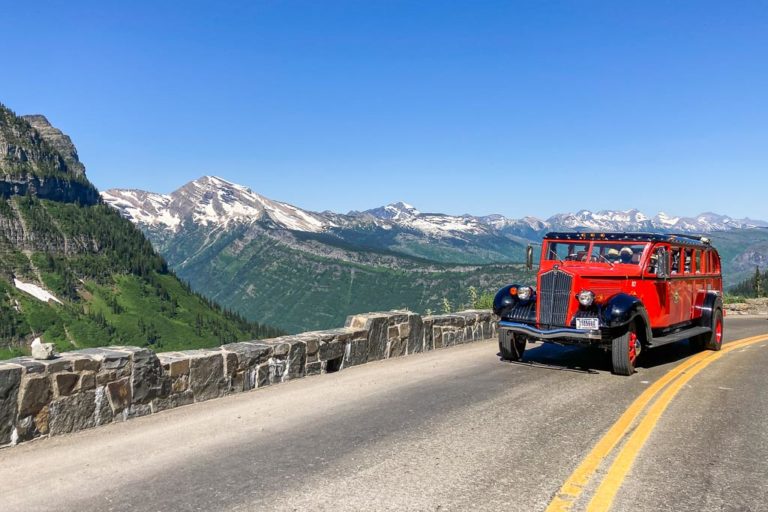11 National Parks for Outdoor Adventures Without the Crowds
When thinking about America’s national parks, the same five or six names always come to mind first. From Yellowstone and Yosemite to Grand Canyon and Arches, these are by far the most famous parks, known around the world for their epic beauty.
There are, however, numerous other parks that are basically just as spectacular, but receive only a fraction of the visitors. The following parks are some of the least-visited and most underrated national parks in America.
The Quintessential National Parks Experience Without the Crowds
If you’re after a quiet getaway in nature, or a full-blown wilderness experience, these are the eleven parks you should look at visiting.
Note that all of them, except one, receive fewer than half a million visitors each year (as of 2016). This is a huge difference—the very opposite, in fact—compared with the millions and millions of people that visit those other, world-renowned parks.
Grand Canyon, for example, arguably the most well-known park of them all, is visited by nearly six million people annually, while Great Smoky Mountains’ visitation numbers dwarf all the rest’s. It welcomes an incredible eleven million visitors each year.
From wildlife watching in subarctic landscapes to hiking across volcanic fields in California and exploring dark canyons, the underrated national parks in America below offer the ultimate national parks experience—without the crowds.
11 Visit-Worthy, Less-Known and Underrated National Parks in America
The following parks are located all over the country, from the Great Lakes region to the Texan desert, from the Alaskan mountains to an archipelago in Southern California.
The numbers in the brackets show the number of people that visited each individual park in 2019.
1. Katmai National Park, Alaska (84,167)
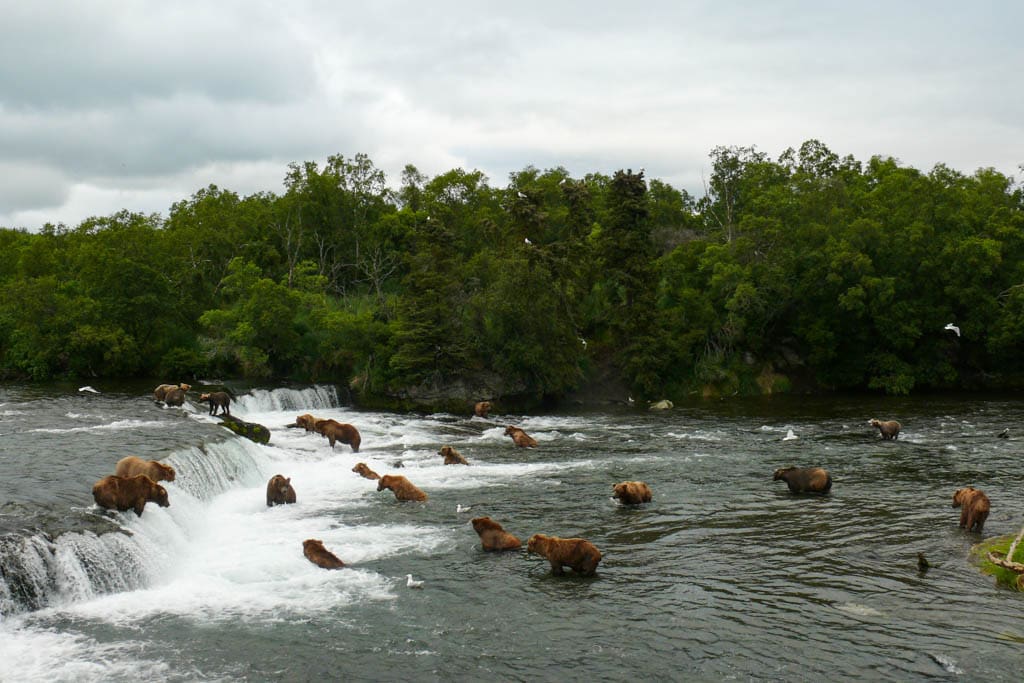
Can you remember a wildlife documentary you watched, perhaps as a kid, in which big brown bears fish for salmon in a waterfall? Almost certainly, that footage was shot in Alaska’s Katmai National Park, arguably the world’s best place for bear watching.
It is, however, not the easiest or cheapest place to get to. No roads lead into the park, so you have to fly into a nearby town, where you would then charter a floatplane to drop you off in the park.
It does require a bit of dedicated saving to make this trip happen, but if you can make there, it’s obviously sensational.
In addition to watching brown bears at Brooks Falls—they’re among the largest in the world thanks to abundant salmon—, Katmai also offers superb kayaking and canoeing, wilderness camping and hiking, and fishing so don’t forget your Sonik fishing gear.
Other highlights are immersing yourself in millennia-old Native American culture and visiting the mystically named Valley of Ten Thousand Smokes. This moon-like landscape was created after Novarupta’s eruption in 1912 and when a lava stream solified.
Note that the park has merely 5 miles (8 kilometers) of hiking trails, but you’re free to explore as you please. Make sure to know what you’re doing, though. This is one of the wildest and remotest regions on earth.
More information: https://www.nps.gov/katm/index.htm
2. Great Sand Dunes National Park, Colorado (527,546)
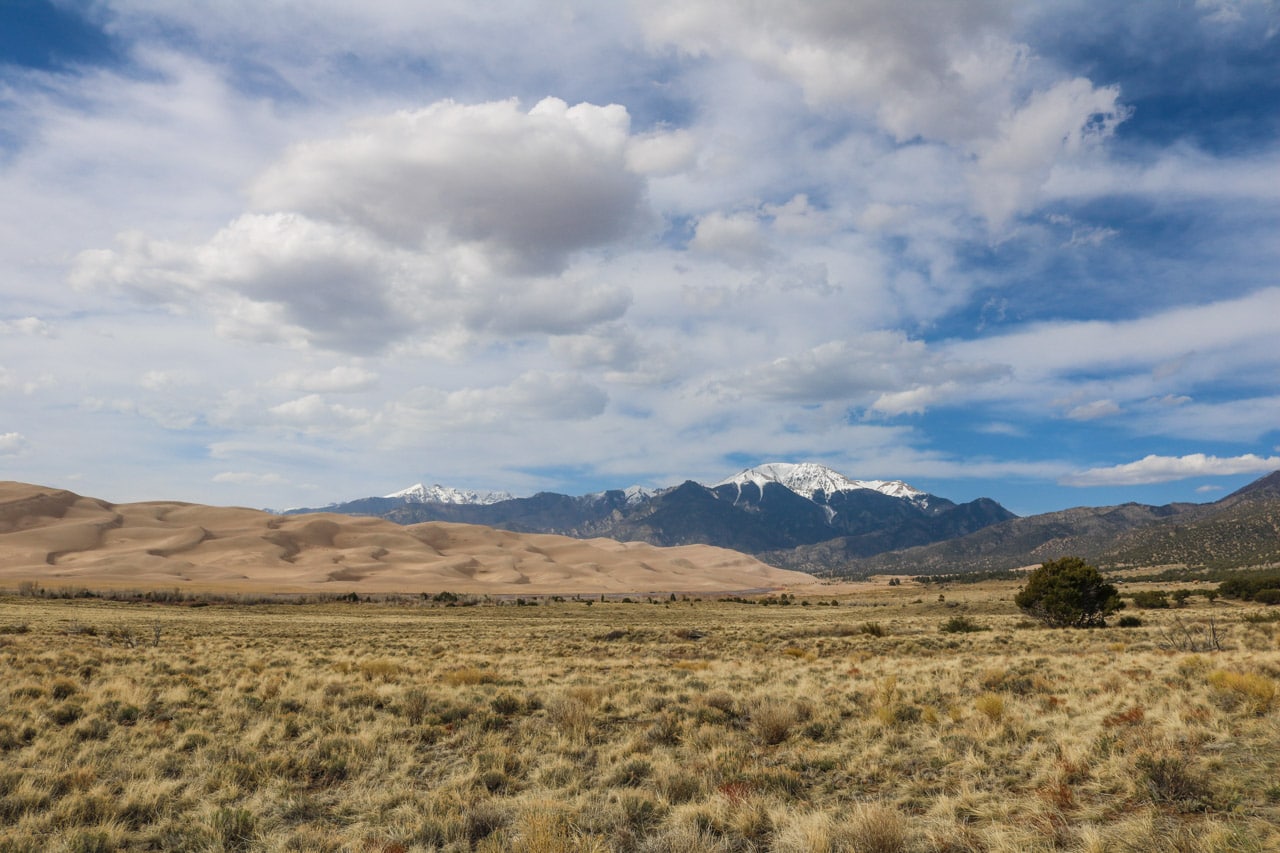
In southcentral Colorado, hidden in the shadows of the towering Sangre de Cristo mountains, lies Great Sand Dunes National Park.
As its name clearly indicates, the park’s main feature is its huge hills of sand. In fact, these are the highest sand dunes anywhere in North America.
Perhaps surprisingly, although this is definitely a rather dry environment, this is not a desert. Plenty of springs and snowmelt feed into mountain streams and creeks, which, interestingly, flow around this vast dune field.
Endless rolling sand hills completely surrounded by flowing water and set against a backdrop of snowcapped peaks is a pretty surreal sight. It is 100% real, though.
Great Sand Dunes National Park is visited by fewer than 400,000 visitors each year, a fraction of the 4.5 million that head to its more northerly counterpart, Rocky Mountain National Park, annually.
So, for the ultimate national parks experience without the crowds in Colorado, Great Sand Dunes is a smart choice.
You could see and “do” this park in just 24 hours. This is plenty of time to explore the park’s star attraction. There are no designated hiking trails in these ever-shifting dunes, but you’re free to wander around.
Head up to High Dune on the first ridge for amazing views, or attempt to find and scale Star Dune, the tallest sand dune in North America.
The most popular activity in this park, however, is sand boarding/sledding. Sand boards and sleds can be rented just outside the park.
Spend an afternoon burning your calves ascending some dunes and rewarding yourself with thrilling rides back down.
More information: https://www.nps.gov/grsa/index.htm
3. Lassen Volcanic National Park, California (517,039)

California is well-known for its earthquakes and tectonically active regions. The perfect example of such an area is Lassen Volcanic National Park.
Situated at the meeting point of the Great Basin deserts, the Sierra Nevada mountains and the volcanoes of the Cascade Range, Lassen Volcanic offers you natural thrills unlike any other in California.
The crowds are thin in this under-the-radar national park. Just over 500,000 people visit annually, which is nothing compared to the enormous crowds that swarm all over Yosemite National Park every year.
Firmly off the beaten path, this surprising park really does remain an undiscovered gem in Northern California—there are plenty of other world-famous places in the state that constantly demand the attention of travelers.
Lassen Volcanic National Park is a place of shimmering lakes, cinder cones and age-old lava beds. The star attraction and namesake of the park is Lassen Peak, the Cascade Ranges’ southernmost active volcano. (Other volcanic national parks in the region are Crater Lake National Park, Oregon and Mount Rainier National Park, Washington.)
This park is exceptional for various reasons, but the most interesting one is that you’ll find all existing types of volcanoes there.
Composite, plug dome, cinder cone and shield volcanoes are all present, alongside other volcanic features such as hot springs, mudpots and steaming lakes.
Additionally, Lassen Volcanic is also open in winter, offering all kinds of fun winter adventures.
More information: https://www.nps.gov/lavo/index.htm
4. Voyageurs National Park, Minnesota (232,974)
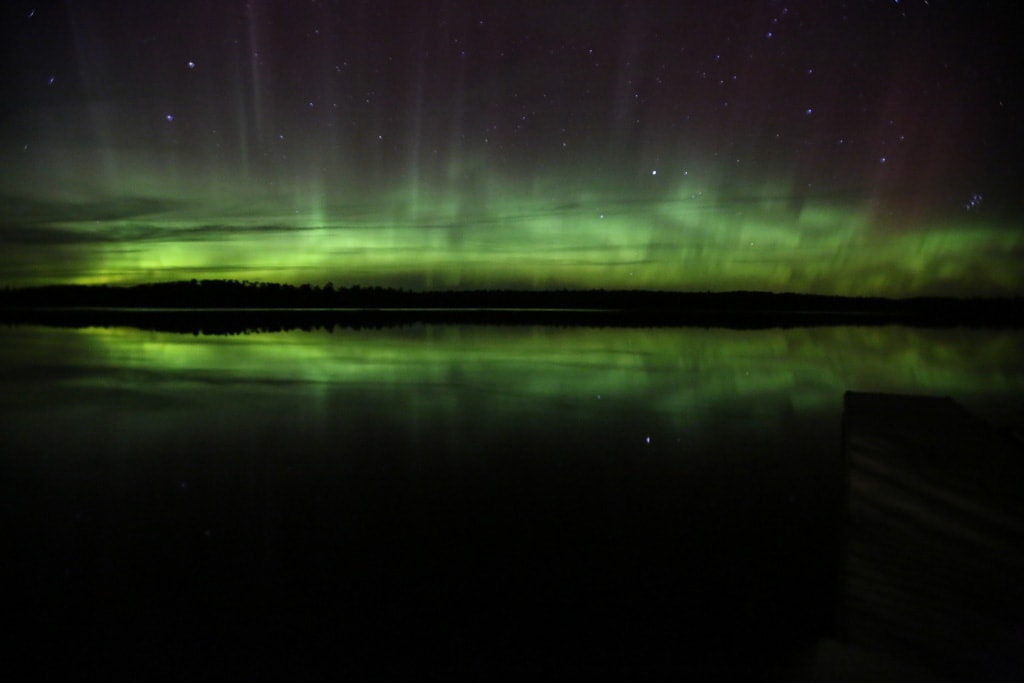
Named after the French 19th-century “voyageurs”, tough fur traders who traveled over land and water from Montreal in search of beaver fur, Minnesota’s Voyageurs National Park is one of the least-known and most underrated national parks in America.
Water makes up more than a third of the park’s surface, an area dominated by lakes and pond, rivers and streams.
The park essentially consists of four huge lakes, the largest of which is 24,000-acre (97-square-kilometer) Lake Kabetogama. Rivers link these lakes, making this a delightful destination for a kayaking- or canoeing-focused vacation in the great outdoors.
The voyageurs traveled thousands of miles on these waterways and, now, the park allows you to follow in their footsteps—or is it paddle strokes?
Fishing, naturally, is a hugely popular thing to do in this park, its waters home to walleye, bass and pike.
Bald eagles soar the skies, while beavers—prized for their expensive pelts by the voyageurs—thrive in these expansive waterscapes.
The beauty of Voyageurs National Park is that its accommodations, including all its campgrounds and the wonderful historic Kettle Falls Hotel, are only accessible by boat.
Pitching a tent at a secluded campsite after a day of paddling is as delightful as it gets. Families, too, will find this park very accessible since the use of motorized watercraft is allowed.
More information: https://www.nps.gov/voya/index.htm
5. Carlsbad Caverns National Park, New Mexico (440,691)
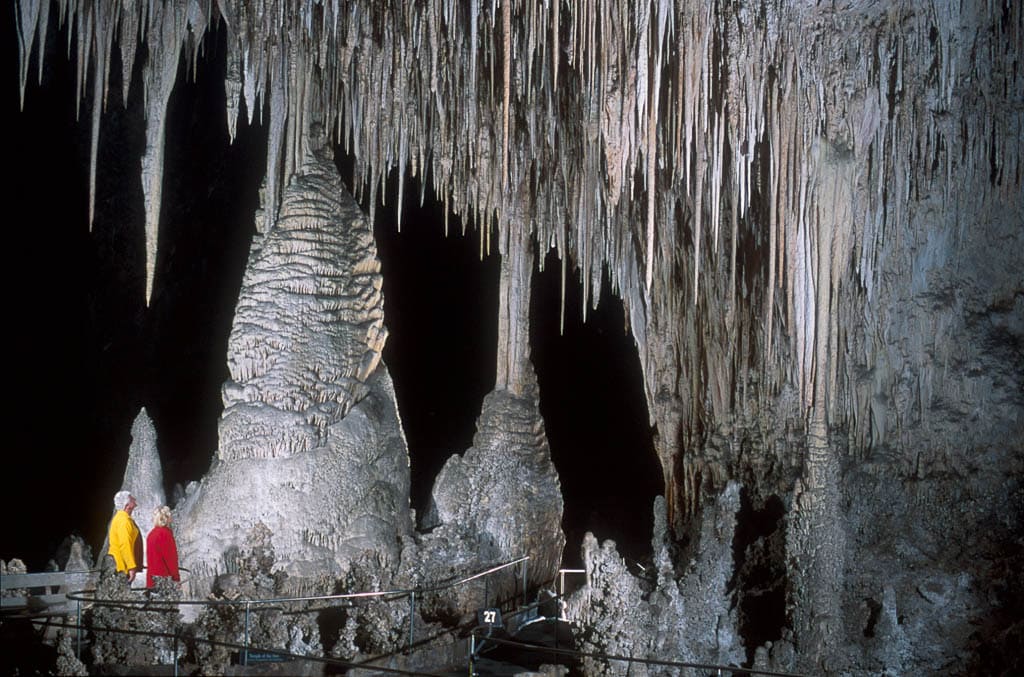
Underneath the ranges of the Guadalupe Mountains, on the border between New Mexico and Texas and pretty close to El Paso, sprawls a vast network of passageways and extraordinary subterranean halls.
A UNESCO World Heritage Site, Carlsbad Caverns National Park is the result of 250 million years of geological and geographical processes.
At the very beginning, this region was home to a shallow inland sea that covered a horseshoe-shaped reef, which extended for a mindboggling 400 miles (644 kilometers).
Tectonic forces combined with climate change caused the reef to get buried underneath layers of gypsum and salt. More tectonic shifts, as recent as a few million years ago, and the corrosive powers of seeping water eventually created this massive cave and its stunning features.
Although the cave itself is the undeniable star attraction in Carlsbad Caverns National Park, the park also consists of beautiful above-ground landscapes.
More than 50 miles (80 kilometers) trails zigzag through the desert landscape, taking visitors through canyons and to historic homesteads.
Besides cave touring and hiking, impressive bat-watching opportunities and world-class stargazing add to the uniqueness of Carlsbad Caverns National Park. This is unquestionably one of the most underrated national parks in America.
More information: https://www.nps.gov/cave/index.htm
6. Wrangell – St. Elias National Park, Alaska (74,518)
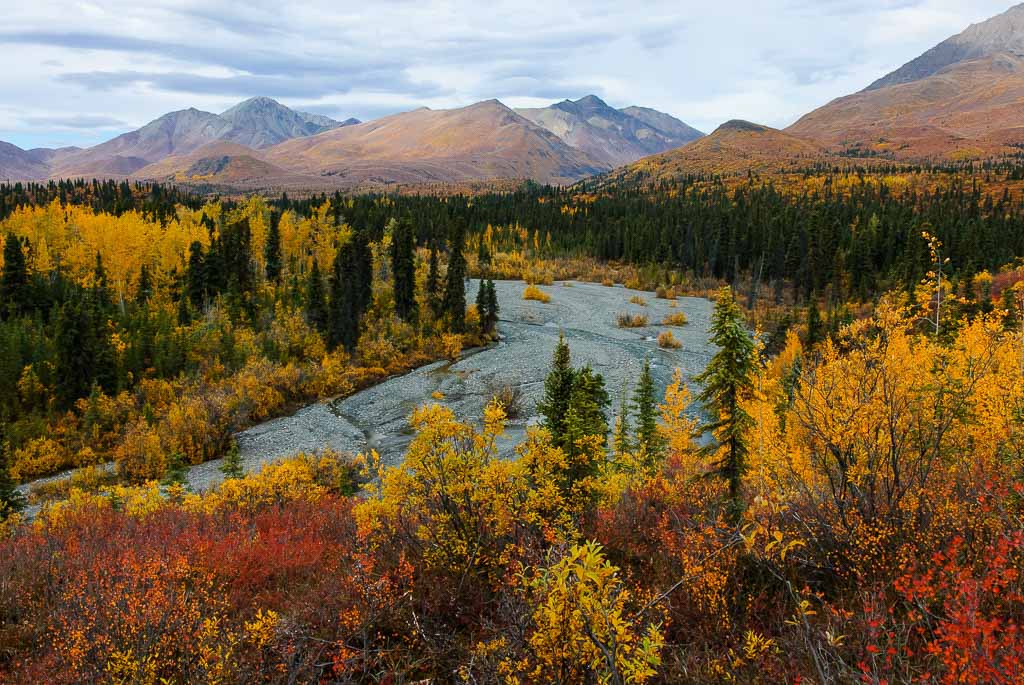
A journey into the heart of Alaska’s Wrangell – St. Elias National Park and Preserve is not for the faint-hearted.
Although it lies a short drive east of Anchorage, one of America’s greatest gateway towns near national parks, this is as wild a place as you’ll find anywhere on earth. If you’re looking for natural superlatives and records, this is where they are.
Covering a mindboggling 20,587 square miles (53,320 square kilometers), the national park and preserve is the largest area managed by the National Park Service. Just to illustrate how vast the park actually is: no fewer than six Yellowstones could fit in it.
Additionally, even though they’re only about 10 miles (16 kilometers) from tidewaters, the park’s towering mountains include most of the highest in North America. Mount St. Elias, for instance, is the second-highest mountain in the United States.
Glaciers, too, are present in abundance and in epic proportions. With its length of 80 miles (130 kilometers), the giant Nabesna Glacier is the world’s biggest valley glacier that’s not in the Arctic or Antarctic.
Another glacier, the Malaspina Glacier, is larger than Rhode Island. Again, sheer epicness is what you can expect in Wrangell – St. Elias National Park.
As vast as it is, the park does not have any paved roads. Nearly all the tourist facilities lie along its western border, including lodges, campgrounds and stores.
Inside the park, the only actual villages are McCarthy and Kennecott, where you can find most of the park’s facilities.
Besides glacier hiking, flightseeing and rafting, the park’s main activities also include visiting historic mining towns and wildlife watching. Caribou, salmon and bald eagles are the typifying animals of this sensational park.
More information: https://www.nps.gov/wrst/index.htm
7. Black Canyon of the Gunnison National Park, Colorado (432,818)
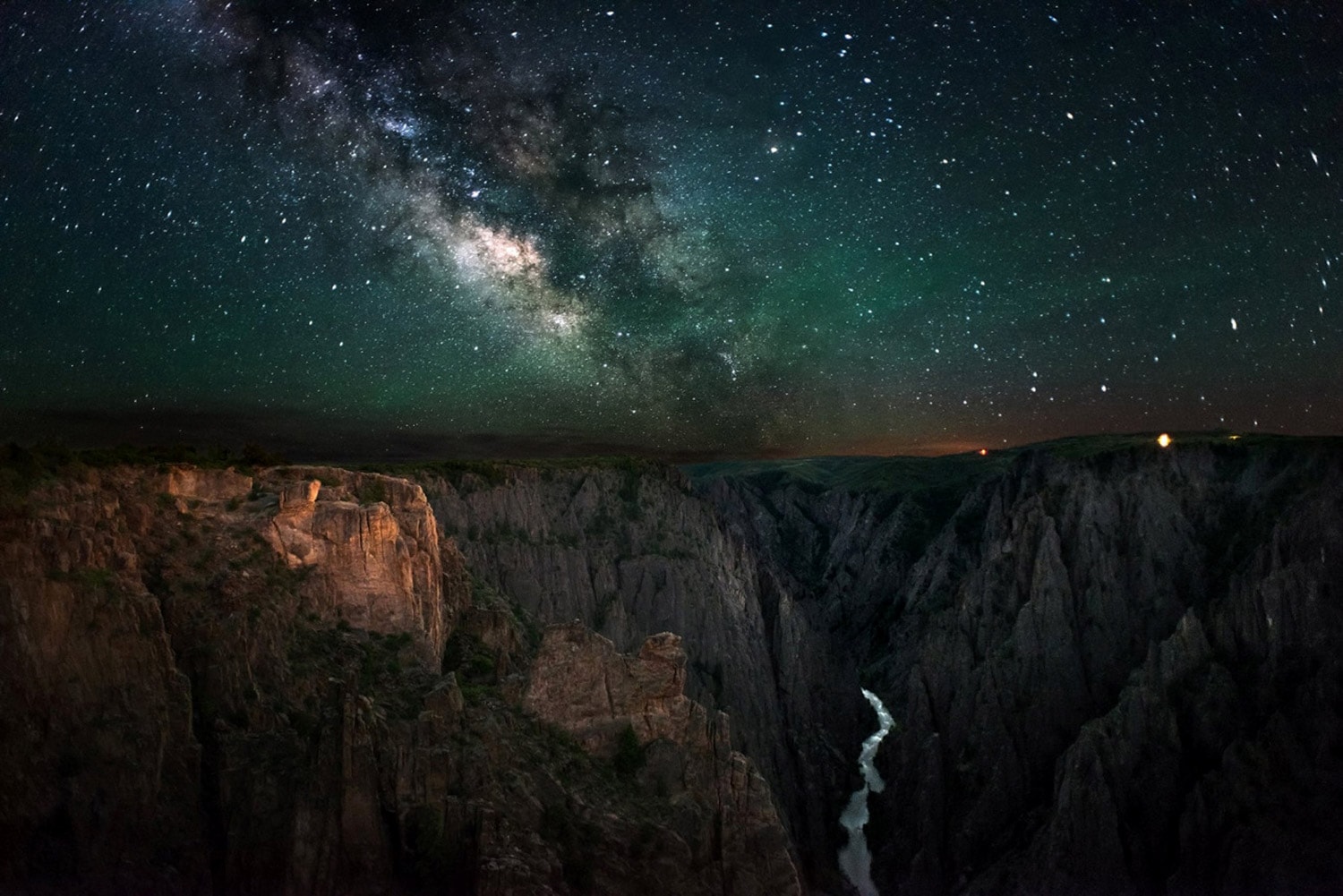
While the Grand Canyon wins the claim of most famous canyon in America, probably even in the world, Colorado’s Black Canyon of the Gunnison boasts equal natural beauty.
One of the smallest, least-visited and most underrated national parks in America, Black Canyon of the Gunnison National Park is American nature at its most dramatic.
This immense gorge is basically a vertical landscape, a narrow and extremely steep canyon that inspires, dizzies and makes jaws drop. The park’s name reflects the sheer verticalness of the canyon walls.
It’s called “Black Canyon” because only direct overhead sunlight reaches the bottom of the canyon. That lowest part of the canyon is said to receive sunlight only just over half an hour per day.
This, in other words, is an eerily dark and wild place. Even Native Americans, in the thousands of years they’ve lived in the region, have never settled in the canyon. They did, however, live on the canyon rim.
Nowadays, Black Canyon of the Gunnison National Park offers visitors the chance to enjoy some of Colorado’s most spectacular landscapes without the crowds. It’s the least-visited of the four national parks in the state—the other three are Rocky Mountain, Great Sand Dunes and Mesa Verde.
Spend a day or, preferably, a weekend driving the South Rim’s scenic drive. Keep your eyes peeled for wildlife, gaze in awe down into the canyon from numerous overlooks, and make sure to hike a couple of the park’s short but beautiful trails as well.
More information: https://www.nps.gov/blca/index.htm
8. North Cascades National Park, Washington (38,208)
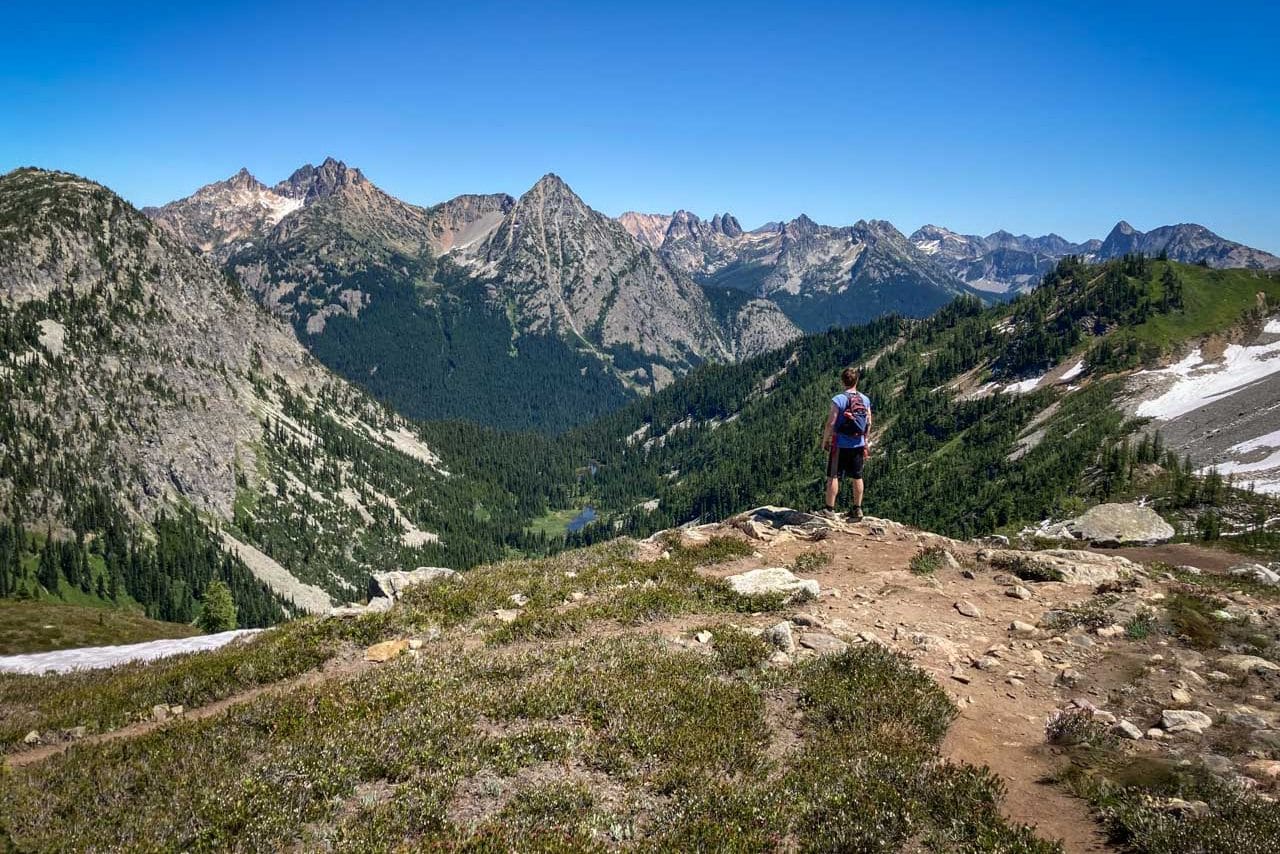
No other place in the contiguous United States has the same potential to make you feel like you’re the only person on earth as North Cascades National Park.
In North Cascades, home to huge tracts of unspoiled wilderness, rugged mountains and pristine lakes, finding adventure is a piece of cake.
Even though it is only three hours by car from downtown Seattle, the park boasts some of the most spectacular and remote wilderness areas south of Canada.
It’s home to more than 300 glaciers. Amazingly, that’s a third of all glaciers in the lower 48 states. This massive amount of ice feeds countless rivers and lakes, flowing through and occupying beautiful mountain valleys.
The landscapes in North Cascades National Park are also beautifully diverse, including towering mountain peaks but also thundering waterfalls, historic Native American and pioneering sites, and huge pine forests.
Attracting fewer than 40,000 visitors each year, this park, despite its accessibility, is all about isolation and solitude. You could spend a weekend exploring and getting to know its landscapes, driving around in a car and doing a few short hikes.
The best way to really experience this epic park, however, is by going on an overnight trek. A couple of superb backcountry campgrounds offer access to day hiking trails in every possible direction—ideal for some in-depth wilderness exploration.
More information: https://www.nps.gov/noca/index.htm
9. Big Bend National Park, Texas (463,832)
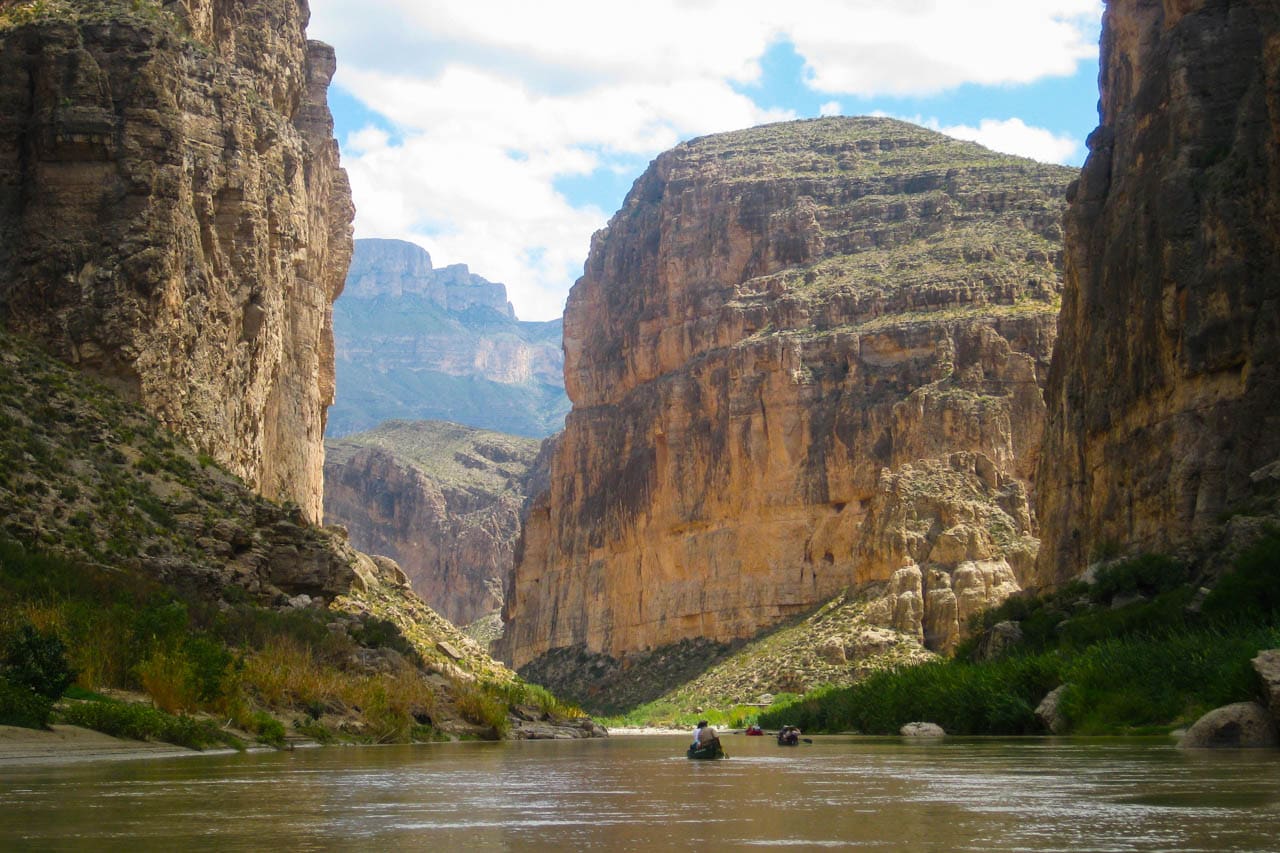
Situated in the far southwestern corner of Texas, Big Bend National Park is one of the most remote national parks in the lower 48 states. It lies in the very heart of the Chihuahuan Desert, at first sight a desolate place broiled in summer by scorching temperatures.
However, a closer look reveals an environment that is surprisingly alive. Along the banks of the meandering Rio Grande, at the bottom of massive canyon walls, fertile soils create a variety of microclimates.
Abundant wildlife and about 1,200 plant species thrive in Big Bend National Park, including more bird species than in any other American national park.
In addition to its steep canyons and parched desert landscapes, Big Bend also boasts valleys covered with wildflowers, historic Native American and pioneering sites, and an undeniably Texan feel.
There’s plenty to do in this fascinating park, from river rafting, hiking and backpacking to stargazing and bird watching.
More information: https://www.nps.gov/bibe/index.htm
10. Kenai Fjords National Park, Alaska (356,601)
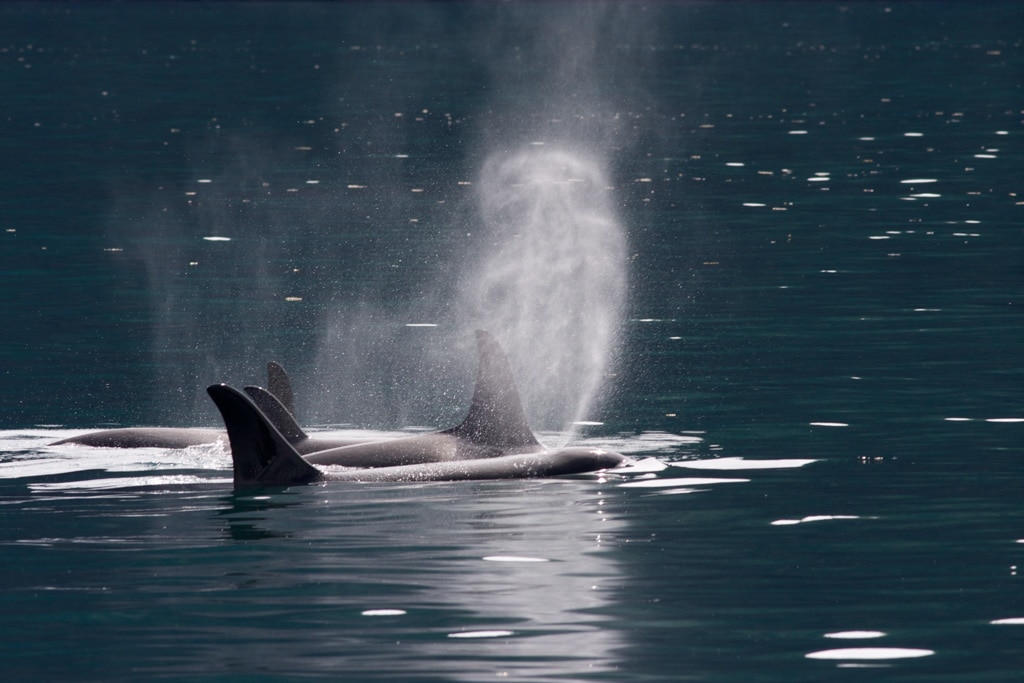
Easily accessible from Anchorage via the town of Seward, Kenai Fjords National Park is among America’s most spectacular national parks.
Although this may be one of the most popular parks in Alaska—only Glacier Bay and, of course, Denali receive more visitors—, it still doesn’t get more than 350,000 annual visitors. A small number considering its awesomeness.
The park is home to almost 40 glaciers, the absolute stars of the show in this brilliant coastal park.
Cutting their way from the Kenai Mountains down to imposing fjords, these glaciers are best seen from the water. The number one thing to do in Kenai Fjords National Park is taking a boat trip.
From the deck, you’ll see plenty of birds and marine animals. Whale watching is epic in this park, sightings are plentiful, including animals like orcas, sea otters, sea lions and porpoises, and minke, humpback, gray and fin whales.
Resurrection Bay, the Northwestern Lagoon and Holgate Arm showcase their enormous waterfalls and calving glaciers.
If you’re feeling a bit more adventurous, you can strap on some crampons and head out for a glacier hike on the massive Harding Ice Field, bound to be one of the best outdoor experiences of your life.
For more fun on the water, on the other hand, you can rent sea kayaks and explore the fjords at your own pace.
More information: https://www.nps.gov/kefj/index.htm
11. Channel Islands National Park, California (409,630)
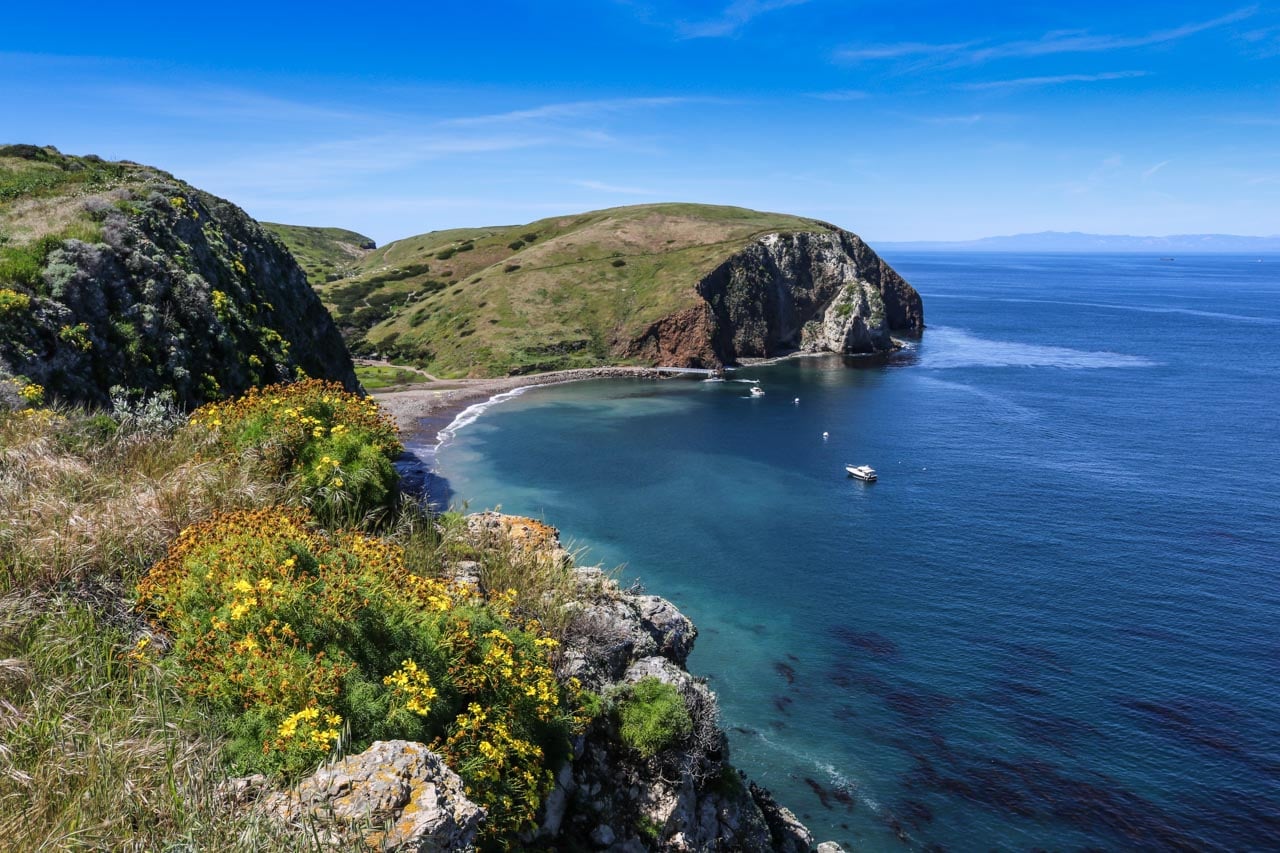
Nicknamed the “Galapagos of North America”, Southern California’s Channel Islands are home to an incredible diversity of plants and animals.
Set at the meeting point of warm equatorial waters and cold northern streams, the archipelago’s conditions are nearly perfect. Exceptionally rich in nutrients, these waters attracting all kinds of marine life, from humpback whales to dolphins.
Elephant and fur seals find refuge and food in vast submerged kelp forests, among the world’s largest, while on land, endemic island foxes hunt for small prey and steal from visitors’ picnic baskets.
The wildlife watching is world-class here. On the boat ride over, you’ll more than likely to spot dolphins and whales.
Five of the eight Channel Islands are protected as Channel Islands National Park—Anacapa, Santa Cruz, Santa Rosa, San Miguel and Santa Barbara.
Each island boasts distinctive features, from sharp peaks to invitingly calm bays and wildflower-covered meadows to sea caves and steep coastal cliffs.
Boat rides depart from Ventura, a small coastal city between Santa Barbara and Los Angeles. Although these islands are definitely remote, they offer the perfect escape from the craziness of downtown L.A.
In fact, everyone visiting Los Angeles and this part of California should just visit Channel Islands National Park. The contrast is immense, the experience revitalizing.
More information: https://www.nps.gov/chis/index.htm






